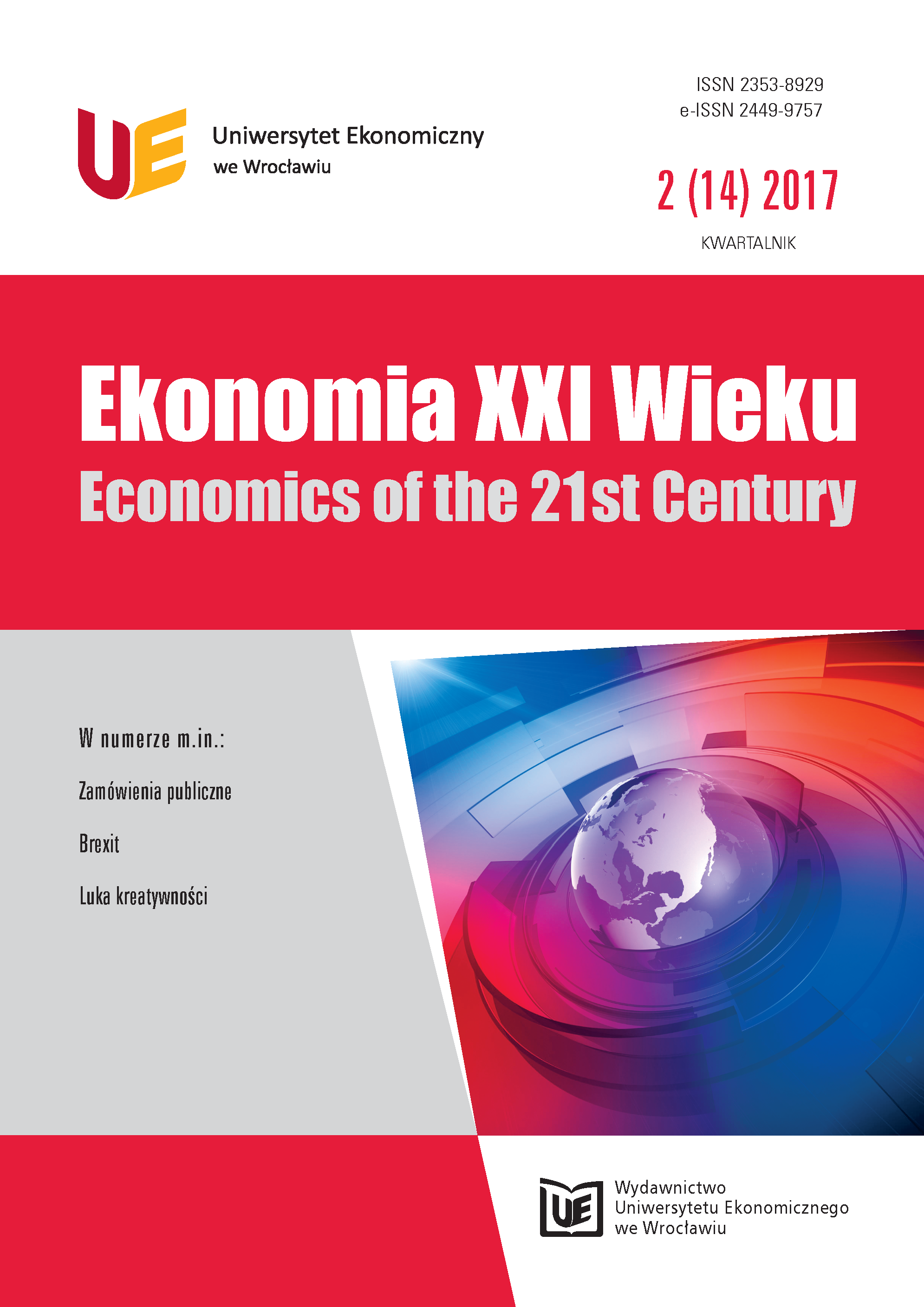Luka kreatywności
Creativity gap
Author(s): Anna LipkaSubject(s): ICT Information and Communications Technologies, Socio-Economic Research
Published by: Wydawnictwo Uniwersytetu Ekonomicznego we Wrocławiu
Keywords: creative economy; classification of professions and specialties; values of creativity; domains of creativity; “creativity gap”
Summary/Abstract: The social purpose of creative economy is – which is already known from the history of economic thought ‒ the pursuit of making the largest possible volume of time of the largest possible number of people creative. Working time is filled with professional activities dedicated for a given profession/specialty. It is those activities (or more precisely, the professions and specialties included in the latest Polish classification: KZiS 2016, based on the International Standard Classification of Occupations ISCO-08, recommended for research in EU countries by Eurostat) which are the subject of research. The objective of the research (cognitive objective) is to demonstrate that there is a “creativity gap”, i.e. many professions/specialties from that classification are not creative by nature, which means they are not orientated on creating cognitive and/or aesthetic and/or pragmatic (utilitarian) values, both recognized in the psychology of creativity, and included in reports on the economics of creativity. The methodological objective is the development of a measuring method for the “creativity gap” defined that way. The research method applied was the analysis of the content of all professions/specialties from KZiS 2016 (in the number of 2455, categorized as 10 major groups of occupations and specialties, 43 large, 133 medium-sized and 445 elementary ones) and 15 areas of creative economics (advertising, architecture, art market, handicraft, industrial design, fashion, film, music, performing arts, publishing industry, research and development, software, toys and analogue games, radio and television, electronic games), extracted by J. Howkins – one of the most important authors in the subject under consideration. If a profession/specialty could be assigned to one of those areas, the type of created value was determined. Upon analysis, it was concluded that various types of values (cognitive, aesthetic, pragmatic) often coexist. Next, a quantitative analysis was performed. “Creativity gap” was operationalized as the difference between 100% and a percentage participation of the creative professions/specialties (in different areas) for a large group in KZiS 2016, to which they were classified. It turned out that this way of defining “creativity gap” is very useful and provides reliable results. The gap for all professions/specialties of KZiS 2016 equals 87.5%. In the case of as many as six large groups: the first (the representatives of public authorities, senior officials and managers), the fifth (service employees and vendors), sixth (farmers, gardeners, foresters and fishermen), eighth (assemblers), ninth (employees performing simple work), tenth (the armed forces), it was found that the “creativity gap” equals 100%. Its lowest value occurs for the seventh large group (78.6%), second large group (79.2%) and third large group (85.8%), that is: for industrial workers and craftsmen; specialists; technicians and other medium level personnel. The groups which are the most “saturated” with creative professions/specialties are handicraft (22.1% of the total number of creative professions/specialties), publishing industry (20.8%) and research and development (19.5%). The course of the performed test procedure may certainly be improved. It would be worthwhile – due to the cognitive effects of comparing results over time, as a result of constant updates of the classification of occupations and specialties – to standardize that course, all the more so as specifying creative professions/specialties is important for the employment statistics in the creative economy, as well as for vocational guidance (to shape the awareness of persons making professional decisions about the diversity of the creative content share in particular professions/specialties).
Journal: Ekonomia XXI Wieku
- Issue Year: 2017
- Issue No: 14
- Page Range: 73-87
- Page Count: 15
- Language: Polish

